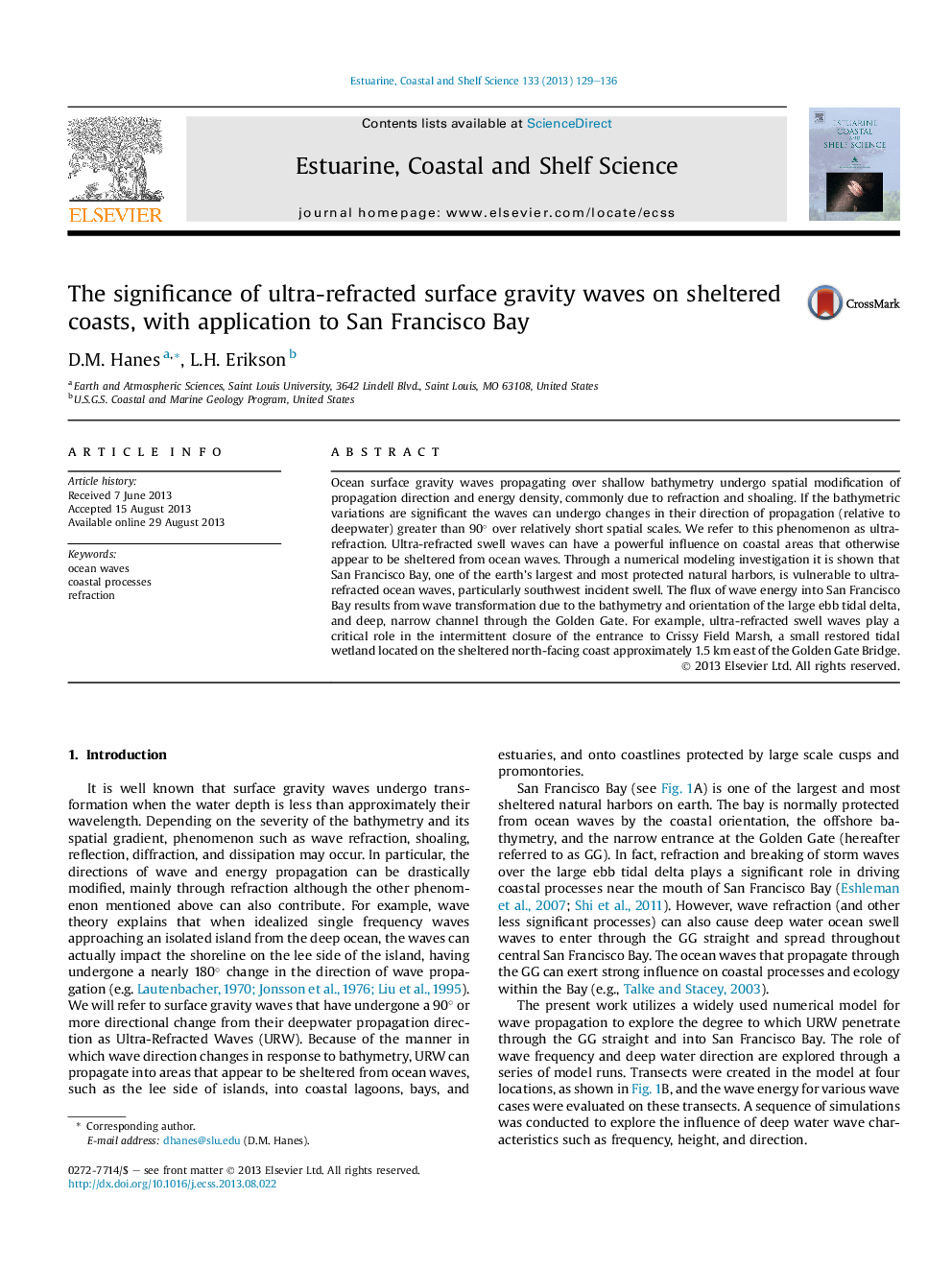| Article ID | Journal | Published Year | Pages | File Type |
|---|---|---|---|---|
| 6385032 | Estuarine, Coastal and Shelf Science | 2013 | 8 Pages |
Abstract
Ocean surface gravity waves propagating over shallow bathymetry undergo spatial modification of propagation direction and energy density, commonly due to refraction and shoaling. If the bathymetric variations are significant the waves can undergo changes in their direction of propagation (relative to deepwater) greater than 90° over relatively short spatial scales. We refer to this phenomenon as ultra-refraction. Ultra-refracted swell waves can have a powerful influence on coastal areas that otherwise appear to be sheltered from ocean waves. Through a numerical modeling investigation it is shown that San Francisco Bay, one of the earth's largest and most protected natural harbors, is vulnerable to ultra-refracted ocean waves, particularly southwest incident swell. The flux of wave energy into San Francisco Bay results from wave transformation due to the bathymetry and orientation of the large ebb tidal delta, and deep, narrow channel through the Golden Gate. For example, ultra-refracted swell waves play a critical role in the intermittent closure of the entrance to Crissy Field Marsh, a small restored tidal wetland located on the sheltered north-facing coast approximately 1.5 km east of the Golden Gate Bridge.
Related Topics
Physical Sciences and Engineering
Earth and Planetary Sciences
Geology
Authors
D.M. Hanes, L.H. Erikson,
